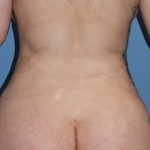Plastic Surgery Case Study – Custom Skull Implants for Crown Augmentation in Women
Background: The shape of the head has importance to many people whether they have good hair cover or not. It should be no surprise that men who lack good hair cover or shave their heads make up a greater percent of aesthetic skull augmentation than that of women. At the least their head reshaping goals Read More…


